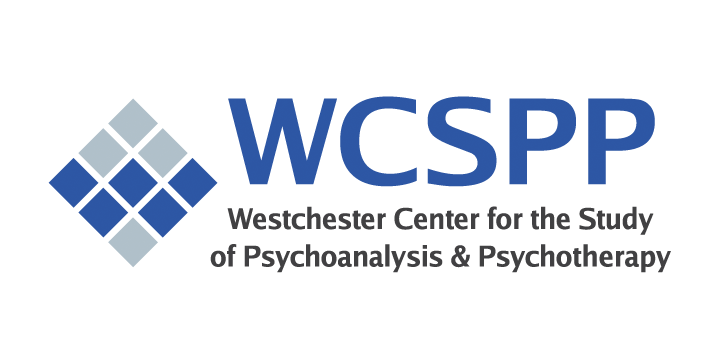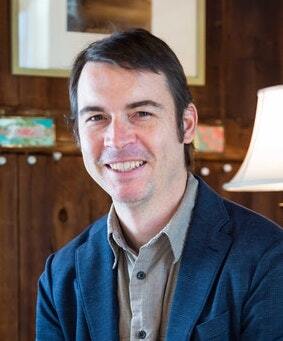By Carter Thornton, LP, LCAT
2024 marks the 100th anniversary of the Surrealist Manifesto, a document that sparked an art movement deeply intertwined with psychoanalysis. Though the movement started in central Europe, largely in reaction to people’s inability to make sense of the mass violence of World War I, it eventually spread across the globe (well-documented in the Met Museum’s Surrealism Beyond Borders retrospective in 2021). From the start, Surrealism had a profound influence on film, visual art, and literature, flouting the more staid Victorian traditions that preceded it and exploring what was considered profane, taboo, and illogical. This was a reflection and outgrowth of the territory being boldly explored by psychoanalysis, which was fostered in the liberal café culture of Vienna in the years just preceding and overlapping with nascent surrealism.
In his original Surrealist Manifesto, André Breton urged a return to the openness of childhood thinking, before the constraints of adulthood and the superego take hold – he saw this as a wellspring of creativity, freedom, and meaning. He also asked bold questions about the definition of sanity and what lay outside the bounds of the conscious mind. He regarded explorations beyond these areas as a “search for truth” and thanked Freud explicitly for pointing in this direction. He also questioned privileging waking reality above dreaming.
The most overt link between both movements was the emphasis and reliance on the unconscious through a focus on dreams, free association, and the uncanny. While Freud, Jung, Ferenczi, and others were charting the unconscious through therapeutic relationships and their collaborations and writings, the surrealists such as Breton and Max Ernst were exploring techniques like automatic writing and collage with found imagery. They conducted interviews in which their subjects were required to tell the unfiltered truth, reminiscent of the notion of free association in psychoanalysis. They explored séance, tarot, “exquisite corpse” (a kind of blind collaborative drawing), and dream imagery as the subject of artworks. At the same time, figures such as Leonora Carrington were producing novels that tested boundaries and perspectives with non-linear plotlines and unusual protagonists such as old women, mystical nuns, and esoteric mythological characters. This mirrored some of the currents in psychoanalytic writing with narrations of the inner lives of children, hysterics, the institutionalized, and mythological/archetypal figures – all of which decentered traditional perspectives of the time.
What is remarkable about Surrealism, considering how weird its aesthetics are, is the extent to which it spread beyond galleries and salons. Salvador Dalí, one of the movement’s most visible and well-known figures due in part to his penchant for self-promotion, is still a household name, making it hard to acknowledge the wildness and boldness of his art. He created a large body of work evoking truly vivid dreamscapes, highly jarring for the time, even if now they commonly hang on dorm room walls and can be found on t-shirts and coffee mugs. While he collaborated on early surrealist films with Luis Buñuel, his fame and reputation grew to the point that he worked with Walt Disney, a testament to how mainstream and acceptable the originally raw, taboo, and unsettling imagery of surrealism eventually became. The same could be said of psychoanalysis. Freud’s concepts of childhood sexuality, trauma, the unconscious, slips of the tongue, repressed memories, and hypnotism – all avant-garde focuses for the time – have become accepted as relatively common cultural touchstones in today’s vernacular.
It is also worth mentioning the political threads between the two movements: both grew out of a a populist social consciousness and a number of the practitioners of both movements were devout Marxists and socialists. One example of this was the early psychoanalysts’ attempts to make their methods available across the socio-economic spectrum, with free clinics set up in various European centers aimed at serving the working class and the underprivileged. At the same time, the surrealists put an emphasis on the accessibility of art and poetry for everyone, not just the fine art elite, by urging practices like automatic writing, simple games with odd results, and making things from found objects. Both movements also called power structures and the collective superego into question, partly through addressing sexual politics. Freud had opened the door to frank and unflinching discussions of sexuality, but followers like Wilhelm Reich and Otto Gross were vocal in their advocacy of free love and non-monogamy. The surrealists took this over the top by looking at sex, humor, death, and the absurd as inextricably linked, unflinching in their willingness to flout taboos (see Dalí and Luis Buñuel’s collaborative filmmaking for a vivid example of this).
Surrealism isn’t merely a theory, however, and like psychoanalysis, it is most alive as a practice. There are many ways we (and our patients) can use its techniques to get closer to our unconscious. All of these can be used during or in between sessions and then witnessed and processed in the therapeutic field for what emerges.
• Free and automatic writing
• Creating a collage from a variety of sources (magazines, fabric, 2D household items, drawings)
• Making a free poem, perhaps therapist and patient alternating lines
• Scribbling or making ink or paint blots and seeing what images emerge
• Drawing images from dreams
• Cutting various texts into snippets, reassembling them in a new way
• Allowing yourself to speak without making sense for a time
• Writing a new creation myth
• Therapist and patient making a collaborative exquisite corpse drawing
• Taking pictures of unusual things you encounter as you go about your day, especially things that present unexpected juxtapositions
These are only a few suggestions; the possibilities, like the contents of the unconscious, are endless.
Carter Thornton is a Psychoanalyst and Creative Arts Therapist in private practice with offices in Westchester County and online throughout Connecticut and New York. He is faculty and clinical supervisor at Institute for Expressive Analysis, and recently joined the teaching faculty of WCSPP. More of his writing can be found on The Little Echo Blog, which focuses on psychoanalysis, creative process, Zen, and esoterica.
References and recommended resources
Bradbury, K. (1999). The essential Dali. Dempsey Parr.
Breton, A. (2023). Manifestoes of surrealism. Revelation Press.
Brotchie, A., & Gooding, M. (1995). A book of surrealist games. Shambhala Publications.
Buñuel, L. (Director). (1929). Chien Andalou [Film].
Buñuel, L. (Director). (1930). L’Age d’Or [Film].
Carrington, L. (1976). The hearing trumpet. Routledge.
Gatzambide, D. (2019). A people’s history of psychoanalysis. Lexington Books.
Makari, G. (2008). Revolution in mind: The creation of psychoanalysis. HarperCollins.
Morris, D. (2018). Lives of the surrealists. Thames & Hudson.
O’Brien, F. (1967). The novels of Flann O’Brien. Dalkey Archive Press


